
MSU Extension provides workforce development opportunities for the animal agriculture industry
DOWNLOADSeptember 6, 2023 - Michigan State University Extension
Impacts
- MSU Extension works to increase farmer success through workforce development opportunities, protecting the environment, ensuring food safety, reaching new markets and advancing agriculture through applied research.
- MSU Extension serves the animal agriculture industry by engaging in research, education and outreach that enhances the quality of life for residents throughout the state.
- MSU Extension’s agriculture production efforts strive to engage those in the industry and develop new talent dedicated to the industry to improve management and production knowledge by enhancing animal care, food safety and food production methods.
- Over 26,000 people attended programs offered by the MSU Extension animal agriculture team.
- 125 partnerships with organizations throughout Michigan were created by the animal agriculture team in 2022.
- 850,576 community members were reached through efforts of the animal agriculture team in 2022.
Priority Areas
Michigan State University (MSU) Extension provides valuable services, programs and information for Michigan’s agriculture industry. MSU Extension agriculture and agribusiness educators serve the agriculture industry by engaging in research, education and outreach that enhances the quality of life for farms and agribusinesses. MSU Extension focuses on areas that directly influence workforce development opportunities and decisions regarding labor issues for those involved in these industries.
"MSU is an important partner and voice in the industry." -Kara Henrys, Michigan Veterinary Medical Association director of member services
For additional information on animal health, visit www.canr.msu.edu/animal-agriculture/.
ADOPTING OF AUTOMATIC MILKING SYSTEMS CREATES THE NEED FOR TRAINING
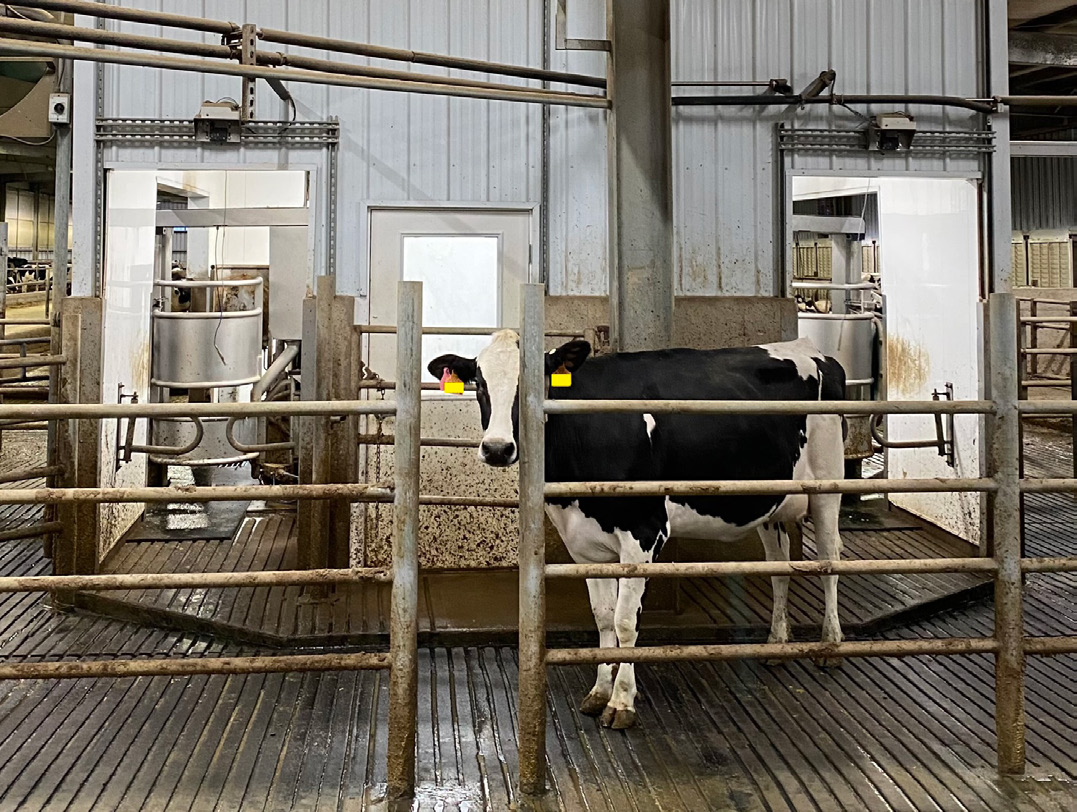
Adoption of automatic milking systems (AMS) is increasing worldwide due to increased labor costs and reductions in the availability of milking labor. AMS success relies heavily on feed management. This differs from conventional herd feeding systems. The feed provided in the AMS is the main driver for cows to voluntarily enter the milking parlor to be milked. Cows consume part of their diet while they are milked and the rest at the feed bunk. Feed management strategies that maximize cow traffic into the milking parlor, milk production and herd health at the lowest possible cost help keep farms in business.
The MSU Extension dairy team worked with Cornell Cooperative Extension to present a webinar that provided the most current information geared toward farmers who have AMS and want to improve AMS management, farmers interested in transitioning to AMS, stakeholders who currently assist farms using AMS, researchers and students. Researchers working with nutrition, management and milk quality for dairy cows in AMS systems provided content for the webinar. A forum for attendants to share their experiences and ask questions was also featured.
Webinar participants indicated they wanted to learn more about and improve their understanding of AMS systems. The webinar resulted in the publication of an MSU Extension news article, “Promises and Potential of Automated Milking Systems,” which was viewed nearly 3,000 times on the MSU Extension website during the year. The article was picked up by The Daily Reporter, a local Branch County newspaper, and published in the paper’s Homegrown section. The newspaper has a reach of about 3,400 homes daily. Additionally, the article was published in the monthly newsletter of the Cornell Cooperative Extension Southwest New York team.
Through this webinar, MSU Extension was able to provide relevant, cutting-edge information and science-based and peer-reviewed learning opportunities on AMS while meeting the educational and decision-making needs of dairy producers, allied industry partners, researchers, students and consumers.
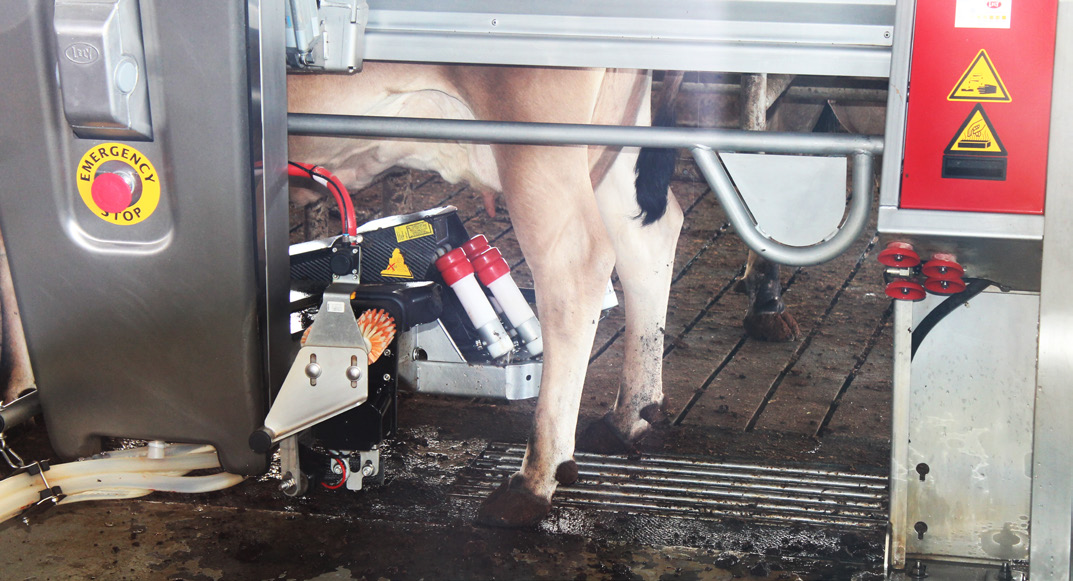
- 375 dairy farms were reached in the webinar.
- Over 80,000 cows were affected by this training.
- 74% of the webinar participants considered the event very easy to comprehend.
"The webinar was extremely helpful to learn more about AMS." -AMS webinar participant
"The presentations were effective on what was proposed." -AMS webinar participant
BEGINNER GRAZING SCHOOL OFFERS OPPORTUNITIES FOR IMPROVED SKILLS & NEW GRAZING OPERATIONS
Michigan farmland includes approximately 523,905 acres of pastureland (U.S. Department of Agriculture, 2017, p. 363). The MSU Extension Beginner Grazing School is designed to provide the latest livestock and forage research on grazing management to both beginning and established farmers seeking to improve their grazing skills. New farmers learn what is needed to start a grazing operation while networking with those more experienced.
The Beginner Grazing School was offered in a hybrid format in 2021. The online portion consisted of nine 1-hour sessions followed by a one day in-person field event. Two separate grazing school courses were offered in 2022, and the same hybrid format was followed for both courses. The in-person field event took place simultaneously at the MSU Lake City Research Center and the MSU Kellogg Biological Station, allowing participants to choose the location best for them.
In 2022, the first Advanced Grazing School session took place at the Waishkey Bay Farm of Bay Mills Community College (BMCC) in Brimley. BMCC is a public tribal land-grant community college that partners with MSU Extension on agriculture-related programs.
Topics for both grazing schools include the increase of knowledge about managed grazing, soil health and fertility, livestock nutrition and health, pasture establishment and renovation, fencing and watering systems, pasture allocation, partial budgeting and grazing plan designing. The in-person field day delves deeper into hands-on demonstrations and activities focused on pasture allocation, fencing and water tools, forage identification and evaluation of pasture allocation using actual livestock. The advanced sessions offered in-depth information on farm and grazing goals, plants, plant growth, soil health, use of livestock to improve soil health, partial budgeting, and water and fencing issues.
The MSU Extension grazing schools are effective and impactful programs, providing opportunities for farmers to increase their grazing knowledge. These opportunities also give participants access to new resources that will help them increase productivity. Proper grazing management is good for the environment, especially the water and mineral cycles. In a state surrounded by the Great Lakes, protecting and regenerating our natural resource base is beneficial to all Michiganders.
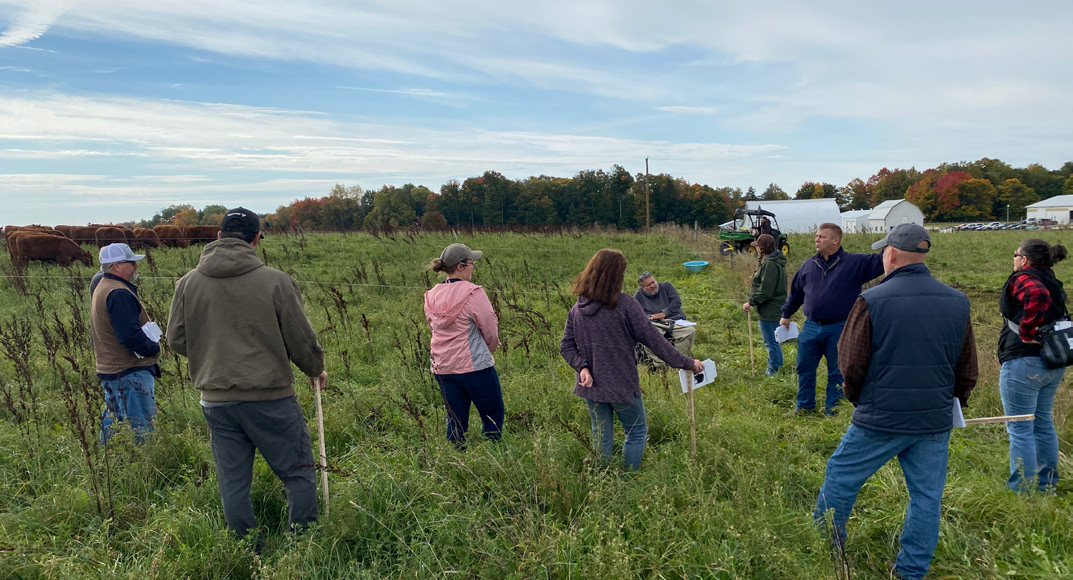
- Over 90% of respondents indicated that they planned to make changes due to information learned at the programs.
- 95% of program participants found the grazing schools impactful to the productivity of their operations.
"The training was great. There was just enough field portion to demonstrate activities, as well as a class size conducive for learning different methods to be utilized in our grazing techniques moving forward." -Grazing School program participant
"Our farm will benefit from the school, and we will continue to grow and use the info we gathered to improve our function." -Grazing School program participant
REFERENCE
U.S. Department of Agriculture. (2017). 2017 census of agriculture. https://www.nass.usda.gov/Publications/ AgCensus/2017/Full_Report/Volume_1,_Chapter_2_ County_Level/Michigan/st26_2_0008_0008.pdf
FIRST RESPONDERS RECEIVE SPECIALIZED TRAINING ON ACCIDENTS INVOLVING LIVESTOCK
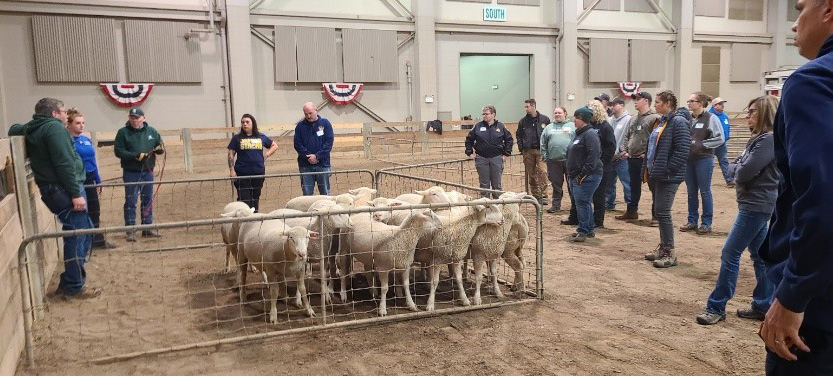
Responding to accidents is never easy for law enforcement officers and first responders, especially when those accidents involve animals. With Michigan’s robust animal agriculture industry, first responders need to be prepared for these types of situations. MSU Extension’s Emergency Response to Accidents Involving Livestock (ERAIL) program helps first responders increase their skills and understanding of accidents involving livestock. The program also works to build a network of trained responders across Michigan.
ERAIL’s multi-pronged approach provides information, resources and training for law enforcement officials, first responders, animal control officers, veterinarians, road commission workers, transporters, people involved in the animal agriculture industry and others who may respond to accidents involving livestock. Virtual training, accessibility to specialized equipment and networking are some of the priorities of the MSU Extension ERAIL team, along with providing hands-on, practical training geared at enhancing the skills of anyone who is involved in accident response. In fall 2022, the MSU Extension ERAIL team, Michigan Pork Producers Association, United Dairy Industry of Michigan and Michigan Turkey Producers Co-op partnered to bring first responders to MSU for this specific training.
“We have a highly trained community of first responders across Michigan who are extremely good at responding to accident situations; however, when an accident scene also involves animals, it becomes very chaotic, very fast,” ERAIL team member Tom Guthrie said. “This is why it is important to provide training that increases the skill sets of first responders on animal handling and behavior, along with providing access to the specialized equipment needed for these specific accident response situations.”
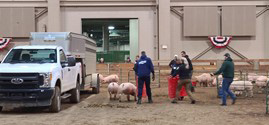
Participants learned about animal behavior and handling from industry experts. Following this session, they put their newly learned and enhanced skills to use by working with beef cattle, sheep, pigs and chickens, using handling tools and equipment to move them and practice loading and unloading the animals onto trailers used for transportation. Following this training session, there are now over 500 responders trained in Michigan.
The ERAIL program in Michigan will continue to grow and provide much-needed training and resources for Michigan’s response community. Efforts are underway to source and place specialized equipment needed for accident response in ERAIL trailers strategically located across the state in areas with dense animal populations or highly traveled roads. By providing training and access to specialized equipment, Michigan will continue to be prepared to respond to accidents involving livestock. This program supports the safety of the first responders and those traveling on the roads while providing for the welfare of the animals involved in these situations and supporting the vast animal agriculture industries in Michigan.
- 96% of participants increased their skills in animal handling.
- 100% of participants are more comfortable handling animals.
- 100% of participants increased awareness of resources.
"The hands-on training was great. This is something that I believe more people need awareness of, especially since Michigan has many farms and interstate operations." ERAIL program participant
"Opportunities that allow our first responders to gain hands-on experience handling animals makes the ERAIL program successful. This is reinforced by the fact that in a post-program survey all participants indicate that they are more comfortable handling livestock and feel more prepared to respond to an accident involving livestock after attending an ERAIL training. We are fortunate to have resources like the MSU Pavilion for Agriculture and Livestock Education and South Campus Animal Farms with farm managers that are willing and able to provide animals for hands-on demonstrations and training." -Mary Kelpinski, CEO, Michigan Pork Producers Association
"Thank you for what you do to bring the response trailers to fruition. After seeing the trailer and experiencing the training, I see even more how this is needed! I’m looking forward to seeing this program flourish and to being a partner in the future." -Jolene Griffin, vice president of industry relations, United Dairy Industry of Michigan
MEAT-CUTTER TRAINING ENHANCES SKILLS OF PROCESSORS & PROVIDES OPPORTUNITIES FOR OTHERS TO GAIN NEW EMPLOYABLE SKILLS
The MSU Extension Meat Cutter Training course is a hands-on introduction to beef and pork fabrication. Meat cutting, or fabrication, is the process of cutting, boning and portioning large cuts of meat to menu specifications. The primary goal of this course is for participants to learn where beef and pork cuts originate from on carcasses and to use their newly gained knife skills to break down pork and beef carcasses into various primal, subprimal and retail cuts. Additionally, participants learn about the proper personal protective equipment to wear during meat processing and gain experience in grinding meat, cleaning and sanitizing equipment and the facility.
Two four-day sessions of the Meat Cutter Training course took place in 2022. Enrollment was capped at eight participants per session to allow for maximum hands-on experience and interaction with staff and faculty in the MSU Meat Laboratory. In total, 16 participants received their certificate of completion in 2022, the first year the course has been offered in person since 2019.
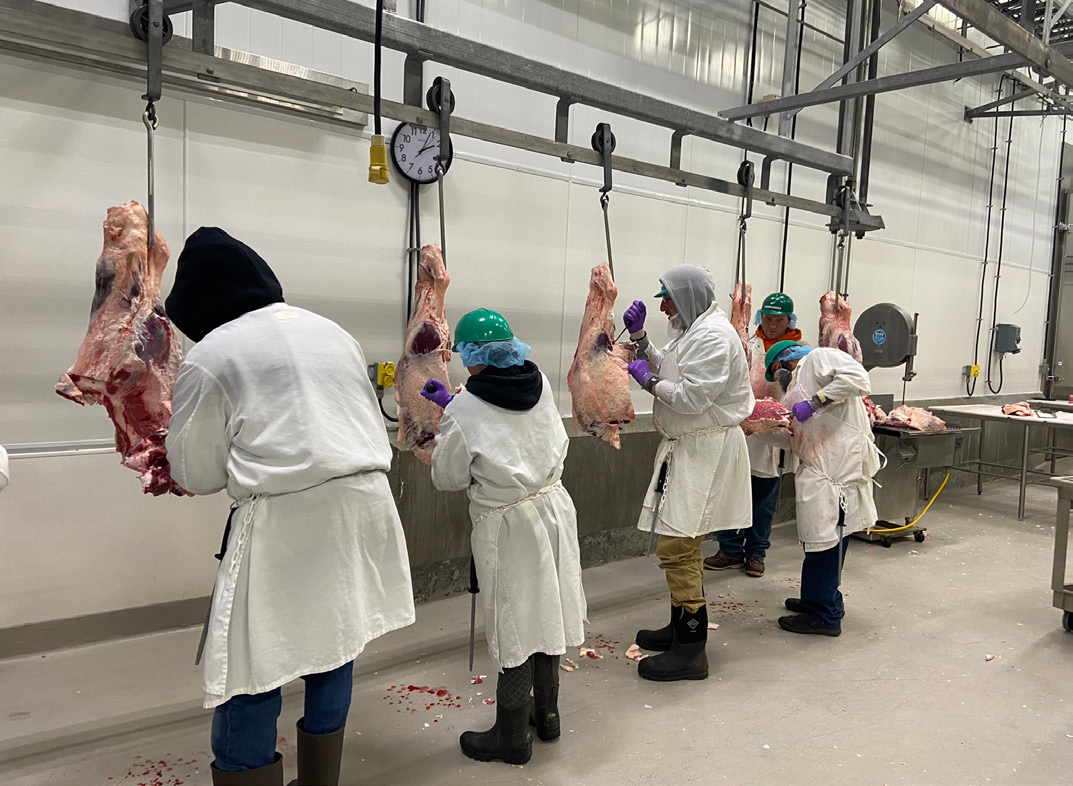
When asked to give feedback on the effectiveness of the course, program participants overwhelmingly saw an improvement in skills needed to adequately complete the tasks needed to process products for consumption. The training was focused on bolstering the meat-cutting skills for a varied audience, including those with current positions and those looking to start a new career, or just gain more knowledge and confidence for their personal benefit. By enhancing the skill set of those already involved in the processing industry and giving those looking for career development opportunities a method in which they could gain new, employable skills, MSU Extension continues to support the animal agriculture industry through workforce development opportunities.
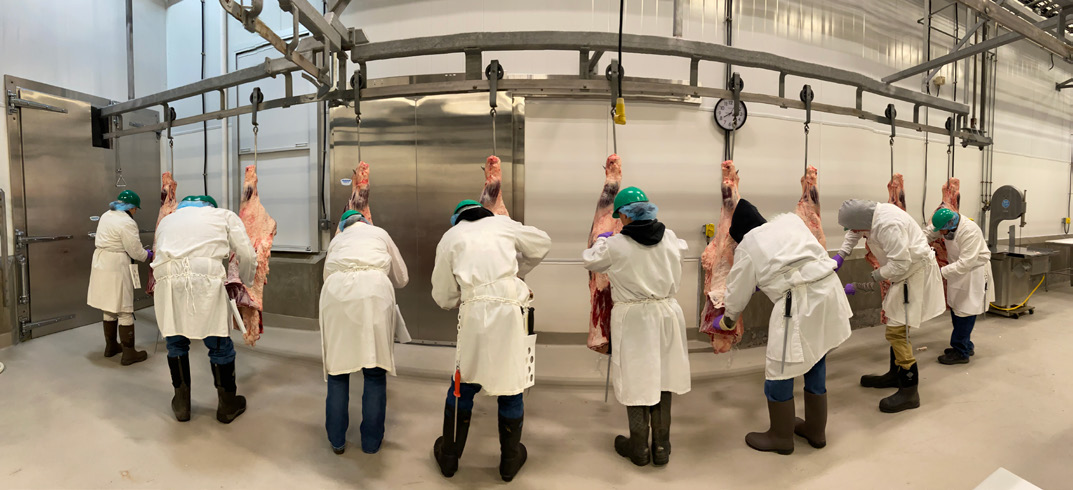
"I very much enjoyed the course and thought it was a good intro to meat cutting. Definitely feel more prepared to go into the meat industry." -Meat Cutter training participant
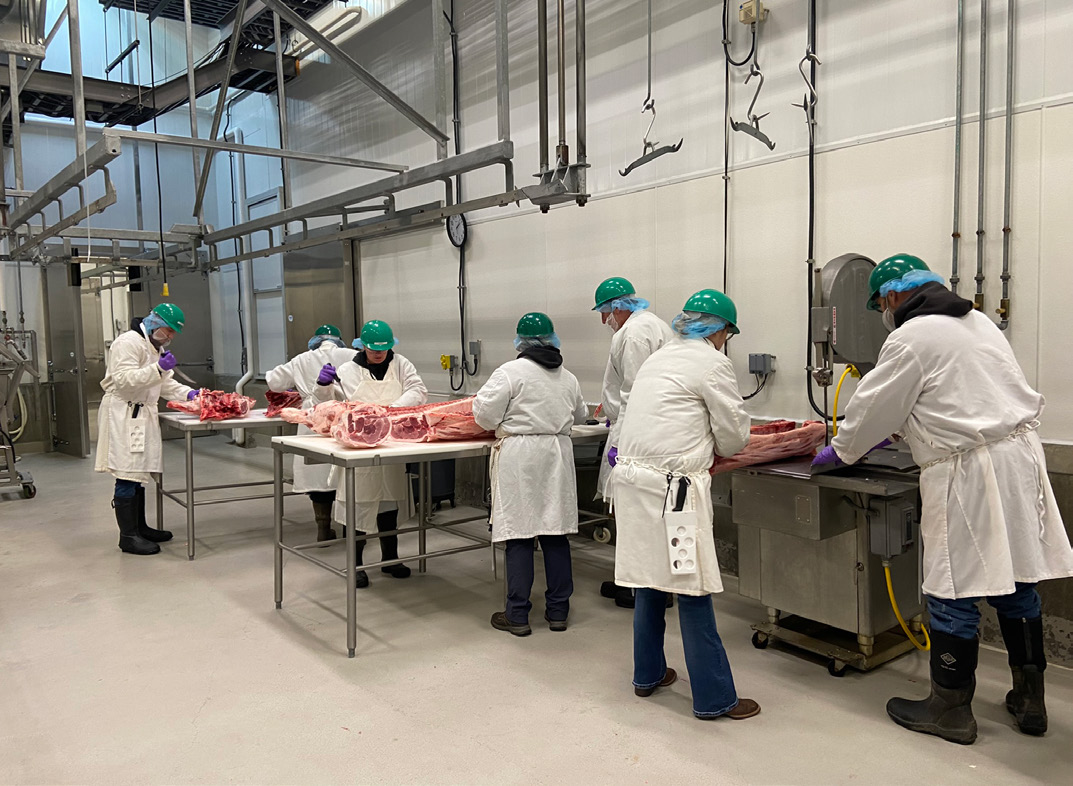
"I would recommend the course to anyone looking to gain knowledge in carcass fabrication. The information was easy to digest for me as a total beginner and the instructors were able to help those with more background to finetune their trade." -Meat Cutter Training course participant
- 100% of program participants improved their meat-cutting skills.
- 100% of program participants have a higher confidence in their meat-cutting capabilities.
- 87% of program participants saw an improvement in specific skills needed to adequately process products for consumption.
YOUTH-FOCUSED EVENTS PREPARE THE NEXT GENERATION FOR THE ANIMAL AGRICULTURE INDUSTRY
The agriculture industry is developing and growing in the United States with farms contributing $164.7 billion of domestic product to the overall $1.264 trillion value of the agriculture, food and related industries. The vastness of this industry can be further supported by the fact that it represents 10.5% of the U.S. employment sector (U.S. Department of Agriculture, 2023). While the industry continues to grow, the number of people who come from farming backgrounds continues to decrease, with farmers and ranchers themselves making up just 1.3% of the employed U.S. population (Lepley, 2019).
These factors create a knowledge void in our workforce with many people employed in agriculture having no prior knowledge of the industry. While this situation poses challenges for those with agriculture operations, MSU Extension continues to develop opportunities to introduce youth to agriculture sectors and potential areas of future employment.
These opportunities include training on health status and disease outbreak in the swine industry, allowing youth to learn how to deliver medications, introducing environmental management concepts and familiarizing youth with production and management procedures performed on farms. These efforts aim to introduce young people to different aspects of the industry, hopefully piquing their interest in further development as they consider employment options. Youth take part in hands-on learning experiences, often in an area they may not normally participate in. While many learning opportunities exist for youth, this report highlights a selection of programs.
The MSU Extension dairy team, in cooperation with 4-H’ers and their parents, developed and designed a program on health management and treatment of sick animals. By reviewing the signs and symptoms of sick animals, using their “disease detective” hat and formulating a plan for treatment, participants worked through actual farm scenarios and came up with solutions. This included learning how to give injections using oranges as the model for an animal and under the direction of experienced staff. These applications serve to promote problem-solving and teamwork skills while introducing participants to the health sector of the agriculture industry.
MSU Extension educators also focus on the environmental responsibilities of farms, combining this information with other topics. During a swine education opportunity, they provided information to youth regarding swine health, nutrition and manure management. Participants were able to listen to presentations and engage in hands-on activities surrounding the volume and weight of manure as well as potential water quality concerns. A mini skill-a-thon tested their knowledge of swine health and nutrition. In programs such as these, participants take these ideas back home and apply them to their own pig projects while getting a glimpse of what expertise the industry needs to continue to grow in Michigan.
MSU Extension offers 4-H Exploration Days, an event that takes place on the MSU campus, giving youth the chance to experience college life and attend educational sessions on a variety of topics, according to their interests. Sessions related to animal agriculture are some of the most requested every year. Several animal agriculture educators provide agriculture-focused programing and in 2022, highlighted the swine and dairy industries:
- The 4-H Exploration Days session Frontiers in Swine Production focused on helping youth understand that employment options in the swine industry, exist beyond owning and working a farm. Educators introduced youth to the topics of ractopamine and swine influenza and discussed the impacts of these topics on the industry. Using pigs from the MSU Swine Teaching and Research Center, participants sampled for each of these specific things and processed the samples at the MSU Veterinary Diagnostic Laboratory. As they toured the facility, they watched a pig necropsy done by a lab technician, helping them understand the skills needed to answer farm health-related questions.
- The dairy team offered a session focused on some of the main on-farm practices performed on dairy animals: dehorning, blood collection and administration of injections. All participants in this session wanted to follow a career path in farming, animal science or veterinary medicine. Educators covered the theory behind the practices in a classroom, which were followed by demonstrations at the MSU dairy barns. During the hands-on activities, the youth identified anatomical landmarks for local anesthesia application, observed the proper placing and use of a dehorning tool, and applied sprays to prevent infection. Regarding blood collection, the participants felt the difference in the jugular vein when pressure was being applied and released in calves and palpated between a cow’s tail vertebras to identify the correct place for needle placement. Additionally, they practiced administering intramuscular and subcutaneous injections using syringes, food colorants, oranges and bananas.
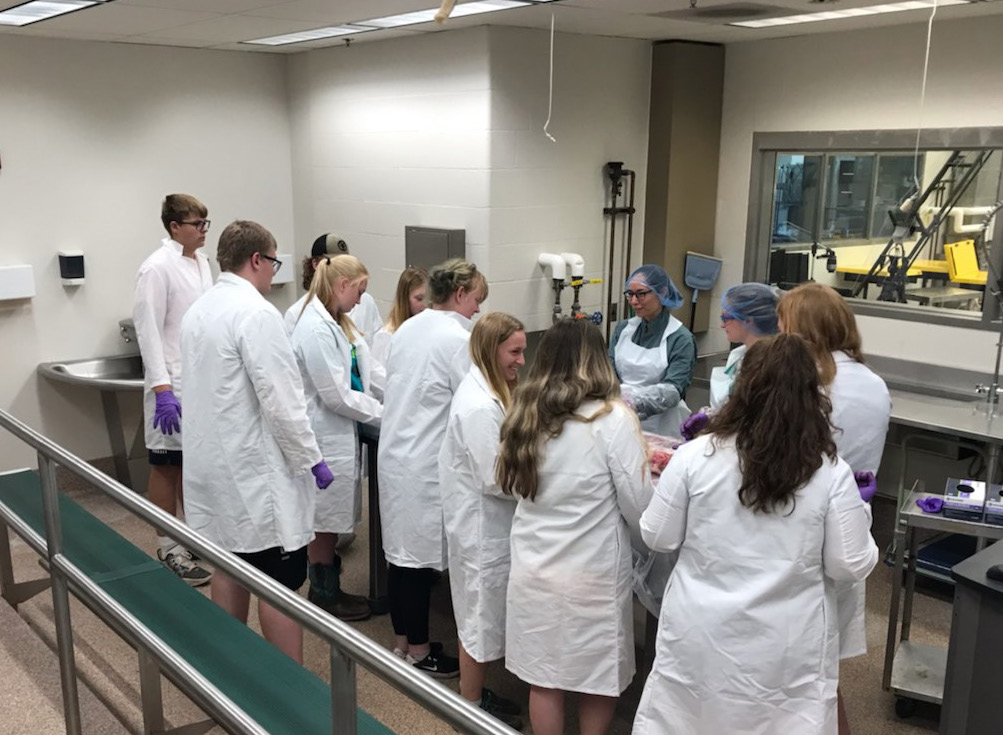
MSU Extension animal agriculture educators continue to work toward developing a future workforce for the agriculture sector, which will have a long-term positive impact on the industry.
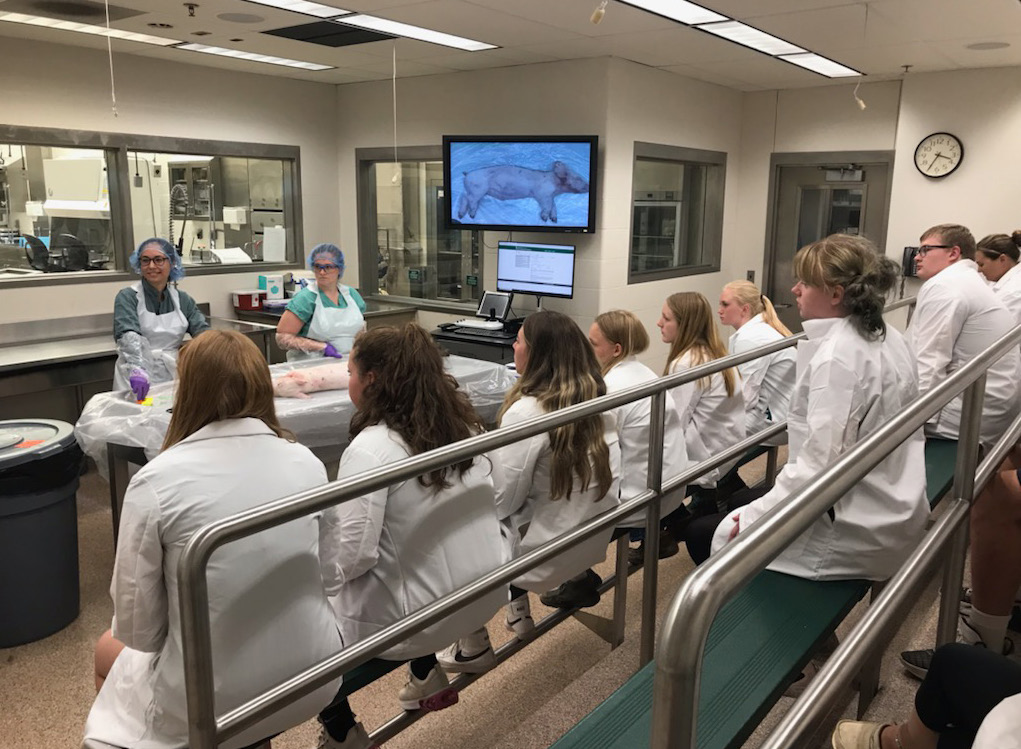
"It was great, and I don’t think it needs to be improved, loved the necropsy." -4-H Exploration Days Frontiers in Swine Production session participant
"Thank you for the presentation last night. I think that was one of your best. I might borrow the idea if I teach a farm animal course next year." -Dairy team animal health program participant
REFERENCES
Lepley, S. (2019). 9 mind-blowing facts about the U.S. farming industry. Markets Insider. https://markets.businessinsider.com/news/stocks/farming-industry-facts-us-2019-5-1028242678#while-there-are-more-than-2-million-farms-across-the-us-farmers-and-ranchers-make-up-just-13-of-the-labor-force-2
U.S. Department of Agriculture. (2023) Ag and food sectors and the economy. https://www.ers.usda.gov/data-products/ag-and-food-statistics-charting-the-essentials/ag-and-food-sectors-and-the-economy.Aspx
BILINGUAL FARM EMPLOYEE TRAINING
Dairy farm employees have a wide range of backgrounds regarding experience, education, race and culture. For many years, the MSU Extension dairy team has supported Michigan dairy farms through on-farm training on multiple topics, including milking, maternity (cow and newborn calf care), care for sick cows, calf care, low stress animal handling, and cow nutrition and feeding management. These topics are part of a core training for new dairy farm employees, yet still applicable to seasoned farm staff.
The MSU Extension dairy team offers the unique aspect of delivering trainings in English, Spanish or both languages. As farms source more employees who speak English as a second language, farmers depend on this service to properly train their employees.
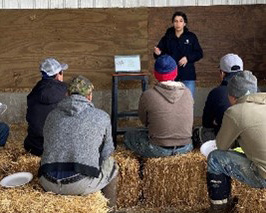
MSU Extension provides educational opportunities that combine classroom and hands-on education to meet the varied learning styles of people employed on dairy farms. This approach allows for those that learn by listening and those that learn by doing to increase their skill set and develop or refine animal care and management skills.
Dairy employees, managers and owners value the training offered by the MSU Extension dairy team. The team will continue to bring education and resources to dairy farms to support the care of the animals, improve the sustainability of the industry and develop the dairy workforce.
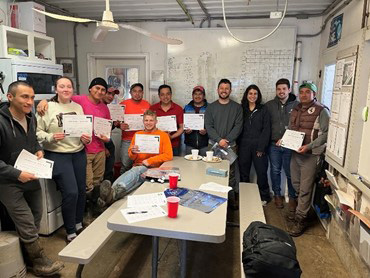
"Really helps to converse and train employees in their native language. They really communicate well and it takes the guesswork out of whether they understand. Also gives them the ability to communicate issues to you as the farm manager." Farm E training participant
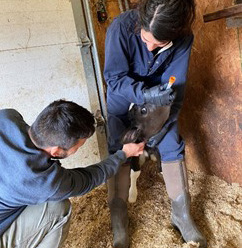
"The [on-farm training] helped our crew understand why we do things the way we do and hearing it from someone off the farm is a big help in retaining that information. When they understand why we do things for the most part, they try to do a better job and follow protocols." -Farm A training participant
"Especially new employees coming on, I think it’s especially important for them to go through the training process to teach them why we do the procedures that we do." -Farm B training participant
- 33 programs offered for dairy farms were offered.
- 22,100 dairy animals are cared for by people trained by MSU Extension.
- 184 employees received certificates of completion from MSU Extension
- 96% of dairy farm employees increased their skill set after attending a training offered by MSU Extension.
- 92% of participants intend to do something to improve the productivity of the farm.
- 93% of dairy farms reported that they noticed at least one positive change in the employees during the months following the training, including engagement, communication with the farm management team, teamwork and efficiency.
- 100% of farms reported improvements in at least one area such as protocol compliance, number of sick calves and cows, number of animals removed from the farm, milk quality, milk production and efficiency.
"The [on-farm training] created a standard that all employees can achieve. It is communicated to everyone in an easy-to-understand way that also explains the ‘why’ to each step. It also comes from friendly Extension educators and not management, which can break down barriers with some employees." -Farm C training participant
"[On-farm training] gave my employees a bit more confidence in communicating with me about issues both on and off the farm that affect their job performance." Farm D training participant



 Print
Print Email
Email

